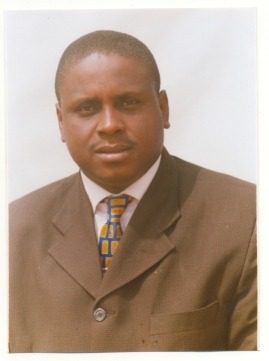Africa
Does Nigeria Need More Primary Health Centers? -By Nzube Ifediba
In the UK, pharmacists can provide treatment for UTIs, hay fever, sore throat, ear aches, and mild conditions.
Obviously, these suggestions have their pros and cons. But rigorous evidence synthesis can help The President and the MoH make informed choices for sensible trade-offs. In the long run, it is more cost effective to fix existing PHCs than build new ones because efficient systems are easier to scale.

Last week, the Vice President announced the President’s intention to build 8800 primary health centers (PHCs), as part of the ongoing Health Sector Renewal Investment Initiative. It’s a really ambitious plan. But does Nigeria need more primary health centers? No, not at this time.
You see, Nigeria’s health system is like a snake eating its tail. A lot of factors feed into a vicious cycle of perpetual challenges. The challenges are so intertwined, it seems as if the best solution is to tackle all the problems at once. But not so. The President’s intentions to make health care accessible to all is ambitious. But ambitious desires aren’t enough. Planning is needed.
Before increasing coverage, we must first become efficient. Why? It is easier to scale efficient systems than inefficient ones. For example, a businessman who hasn’t learnt how to make one shop successful, shouldn’t expand to more areas. A person who hasn’t run a 5k shouldn’t dream of running a marathon. A person who hasn’t learned to save from his 100k salary is unlikely to save if the salary is increased to 1 M. But enough analogies. You already get my point.
Currently Nigeria has about 30,000 PHCs, all of which are inefficient. For now, I’ll briefly highlight two core challenges:
Structural Inefficiencies
A lot of PHCs are deplorable. I don’t know who has seen Dr Aproko’s recent video on the state of one of the PHCs. And it’s not just one centre. This situation cuts across many centres. Did you know that out of the 30,000 centres, only 6000 are operating? In addition, as much as 75% of these centers do not have half the minimum medical equipment required to run efficiently. Finally, more than half of centers do not have essential drugs in stock. What are the root causes? Many and varied, and not the purpose of this piece. It will be more cost-effective to investigate and fix the causes of these inefficiencies, than establish new ones.
Systemic Inefficiencies
Primary health centers are more populated with volunteer community health workers than paid professional staff. Recently on LinkedIn I asked a question: “ Why are family physicians providing primary care in General Outpatient Departments (GOPDs) in secondary and tertiary hospitals in Nigeria? Why aren’t they overseeing primary care centers?”
The answer is a real head scratcher. In the UK, General Practitioners are key players in the NHS primary care system. As gatekeepers, they make sure secondary and tertiary systems are not overloaded with traffic. Can we model this in Nigeria? One obvious challenge is our health workforce needs. Nigeria is bleeding health workers faster than a ruptured artery.
What can be done to stop the bleeding? There is no silver bullet for this. As I argued last year in BMJ’s Global Health, strengthening our health workforce requires us to play the long game.
Which brings to the next question, are there ways to efficiently make the most of our current workforce?
Here are some suggestions to consider:
1. Can the government consider packages/incentives that will attract medical
providers from private facilities into PHCs?
2. Can family physicians be incentivized with packages that grant them some
measure of control over PHCs? For example, what if PHCs were “franchised” or
sublet to licensed family physicians?
3. Can apprenticeship programs be run for undergrads with interest in primary care
medicine?
4. Can we increase the scope of practice of other health workers? For example, in the US, nurse practitioners and physician assistants are licensed to provide primary care.
In the UK, pharmacists can provide treatment for UTIs, hay fever, sore throat, ear aches, and mild conditions.
Obviously, these suggestions have their pros and cons. But rigorous evidence synthesis can help The President and the MoH make informed choices for sensible trade-offs. In the long run, it is more cost effective to fix existing PHCs than build new ones because efficient systems are easier to scale.






















